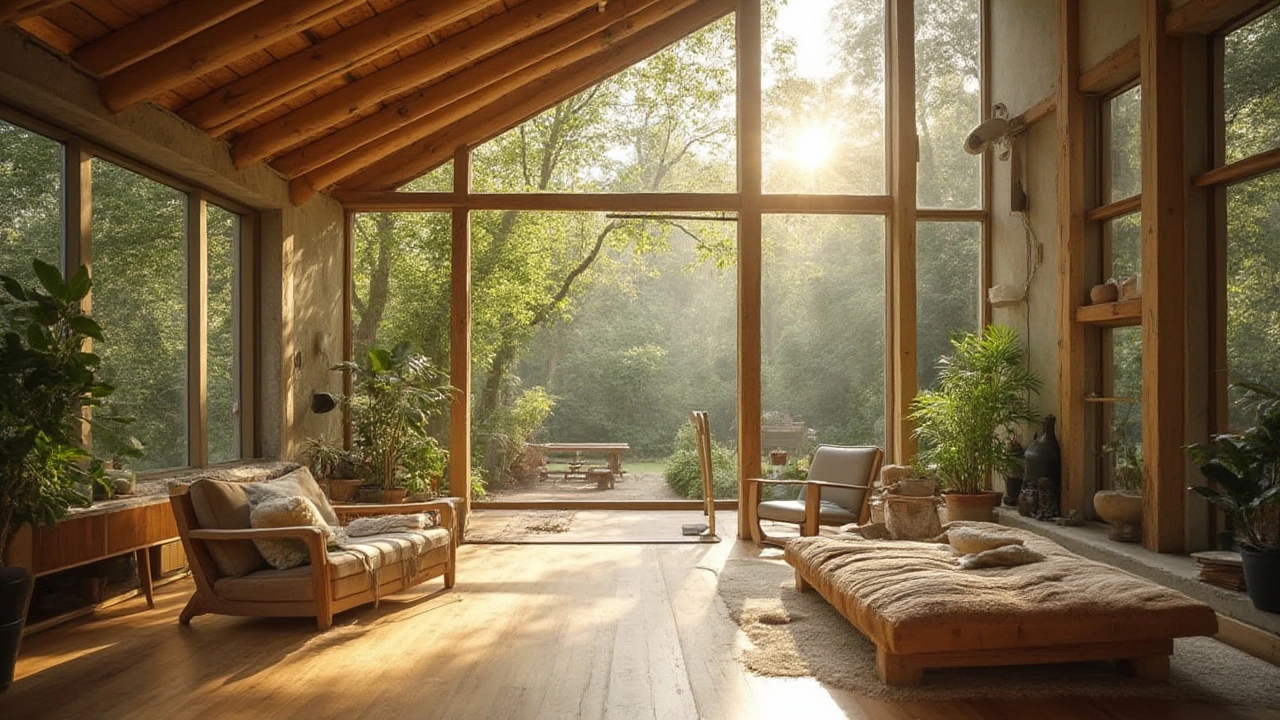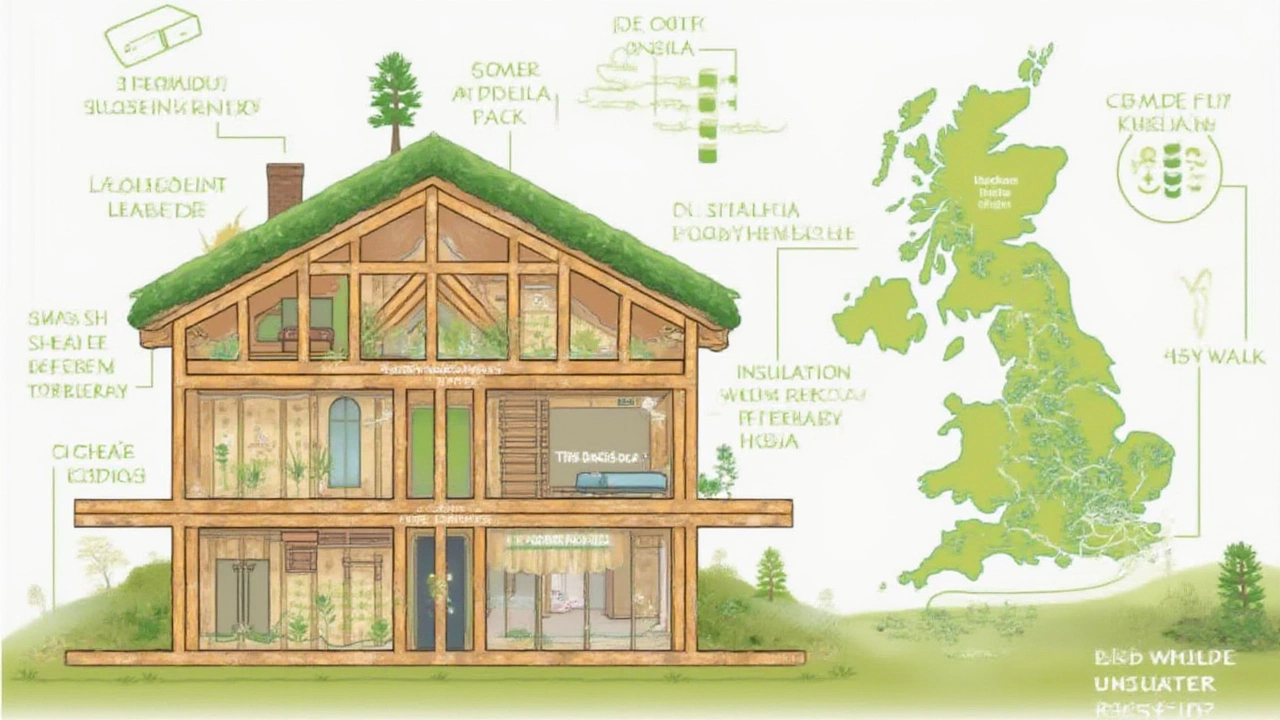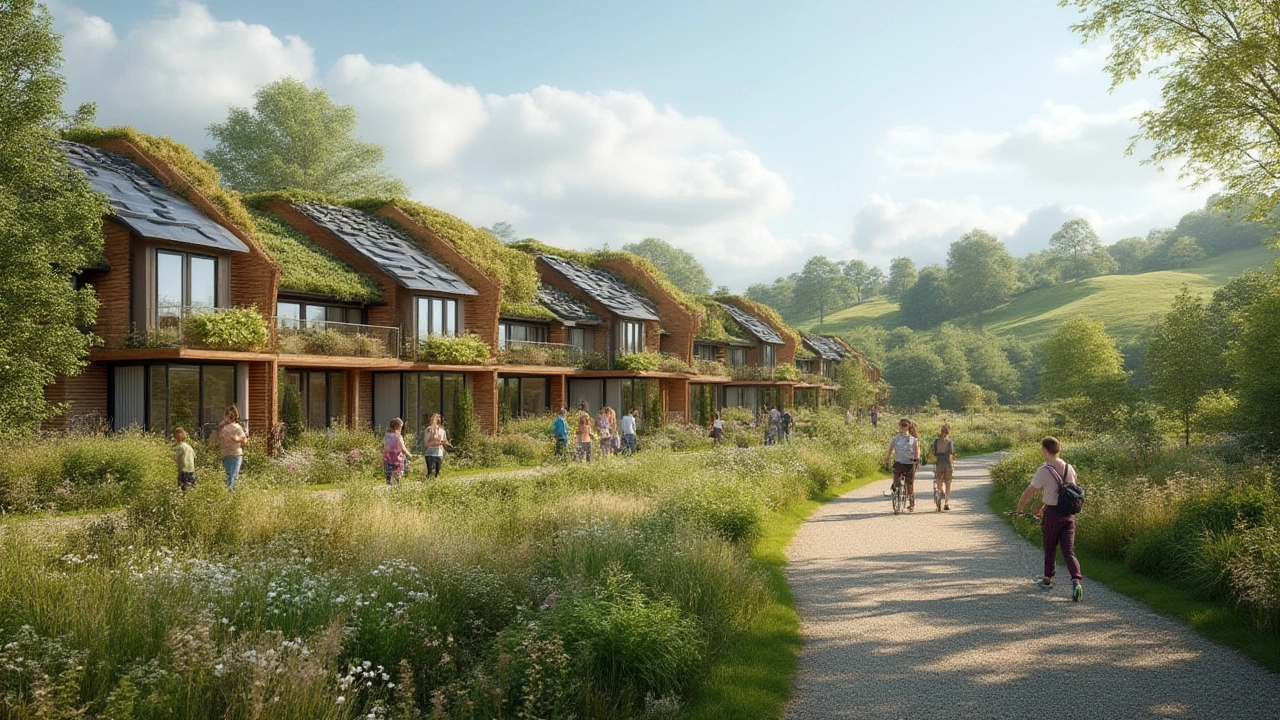Imagine your home producing almost all its own energy, sipping water instead of guzzling it, and leaving barely a trace on the planet. That’s not science fiction—it’s happening right now. From hempcrete walls to rooftop solar panels, eco-friendly homes are grabbing headlines and stealing the hearts of everyone who dreams of guilt-free comfort. But here's the twist: not all "green" homes are created equal, and what looks great on an Instagram post might not always stand up when you look at the full environmental cost. So, what is the real deal when it comes to environmentally friendly houses?
Breaking Down the Green: What Makes a Home Truly Eco-Friendly?
So, what actually turns a house from a regular box of bricks into an environmental superstar? The answer isn’t just a single magic material or some futuristic tech. True eco-friendliness means thinking about the entire life cycle of a home—from where the building materials come from, to how much energy it uses every day, right through to what happens when it finally gets torn down a hundred years later. To get an honest picture, you have to zoom in on the small stuff and pull back for the big picture.
Start with the build. Conventional houses rely heavily on concrete, steel, and bricks—three giants of greenhouse gas emissions. Concrete alone is responsible for about 8% of global CO₂ emissions. By contrast, homes built with natural or recycled materials like straw bales, rammed earth, hempcrete, or reclaimed wood can lock away carbon or have a tiny footprint from the start. Take straw bale homes: stuffing walls with agricultural waste not only saves landfill space but also provides amazing insulation, keeping you warm in winter and cool in summer—sometimes cutting heating needs in half compared to standard builds.
But materials are just the tip of the iceberg. The design matters a ton. Think orientation—where your house faces. Rooms bathed in natural light cut down the need for electric lighting, while strategic window placement lets breezes cool the place instead of an energy-hungry air conditioner. Passive solar homes use south-facing windows and thick walls that soak up the sun’s warmth during the day and release it slowly at night. You’d be surprised how often clever design outsmarts fancy gadgets.
Home size is another huge piece of the puzzle—because the greenest square meter of a house is the one you never build. The tiny house movement isn’t just about being quirky; smaller homes simply use fewer resources and need less energy to heat or cool. Think about it: a 900-square-foot cottage made with recycled materials will stomp out less CO₂ than a sprawling 5,000-square-foot "eco-mansion" covered in solar panels.
After the build, it’s what’s inside that counts. Ultra-efficient insulation, triple-glazed windows, and heat recovery ventilation systems can sometimes halve utility bills. Low-flow water fixtures, rainwater harvesting barrels, and graywater recycling all squeeze more out of every drop. For heating and cooling, ground-source heat pumps and solar hot water systems cut fossil fuel use to the bone.
The best eco-homes even consider what happens when the party's over and the house hits retirement age. Recyclable or biodegradable materials make demolition far less damaging. Modular design and “design for disassembly” mean pieces can be reused instead of sent to landfill.
But are these features just a nice bonus or do they actually pay off for the planet and your pocketbook? In a real-world case, a study by the National Association of Home Builders found that energy bills for certified green homes were 40-50% lower compared to standard homes—sometimes saving owners $1,200 to $2,600 per year depending on climate zone and house size. That kind of money (and the planet!) shouldn’t be ignored.
Want some hard numbers? Here’s how different home types stack up for energy use and emissions. (Values for average-sized single-family homes per year.)
| Home Type | CO₂ Emissions (kg/year) | Energy Use (kWh/year) | Water Use (gallons/year) |
|---|---|---|---|
| Conventional (US average) | 18,000 | 10,800 | 109,500 |
| Passive House | 7,000 | 3,900 | 57,200 |
| Tiny Home (Recycled Materials) | 3,000 | 1,900 | 24,100 |
| Straw Bale / Natural Build | 5,500 | 2,200 | 53,000 |
| Zero Energy Home | ~0 | Varies (Net Zero) | 50,000 |
Some of these zero energy homes even tip the meter backwards, giving extra power to the grid instead of taking from it.
Before you start building or buying your next eco home, ask yourself: Where are the materials coming from? How much space do I actually need? Can I position my house to harvest sunlight or seasonal breezes? Every answer moves you closer to a home that doesn’t just "seem" green, but truly is.

Picking Your Style: Comparing Green Home Types
Ready to look beyond the buzzwords and get your hands dirty? Not every eco-home looks like a Hobbit house (though those are adorable, aren’t they?). Here’s a closer look at some of the most planet-friendly home styles on the scene, each with its own quirks, perks, and the odd drawback.
Eco-friendly homes can pop up in all sorts of flavors, so here are some of the most talked-about:
- Passive houses: These European trailblazers rely on airtight construction, beefy insulation, and smart design to use up to 90% less heating and cooling energy compared to code-built homes. There are about 2,600 certified Passive Houses in North America today, though the number is growing fast. They’re a splurge on the front end, but pay off handsomely in low bills.
- Straw bale homes: These cozy builds trap heat like a thermos in winter, and the thick walls block noise as a bonus. Reusing agricultural waste (straw) keeps landfills lean, and because you’re not firing bricks or cooking cement, the build’s carbon footprint stays tiny.
- Tiny homes: Less is always more when it comes to resources. Less stuff, less build, less energy. Many tiny homes are mounted on wheels, so you can change your view and shrink your carbon footwear wherever you go. They’re not for everyone, but if you’re single or a couple without kids, a tiny home can cut total environmental impact by up to 75% over a typical house.
- Earthships: These off-the-grid fortresses are usually made with rammed earth, recycled tires, cans, and bottles. Designed to handle almost any climate, they collect rainwater, power themselves with solar and wind, and have deep "thermal mass" to keep indoor temps steady. Pioneered in New Mexico, earthships are a badge of eco-honor, though permitting can be tricky in some regions.
- SIPs and ICFs: Structural Insulated Panels (SIPs) and Insulated Concrete Forms (ICFs) make for fast builds and super-tight envelopes that save heaps on heating and cooling. If you blend them with eco-friendly finishes and renewable energy, you’ve got a low-carbon winner.
- Tiny apartments in repurposed spaces: Turning an old factory, shipping container, or barn into a home gives you bonus points for reuse, as you’re not tapping new resources or bulldozing the land.
- Zero energy homes: These houses use clever design and enough solar panels to cancel out their annual energy use. Many new builds strive for "zero ready" certification, meaning all it takes is to add panels when possible.
Each type comes with tradeoffs. You get a super-strong building with ICF and SIP, but foam-based materials like polystyrene aren’t biodegradable. Straw bale homes are ultra-green but can be tricky to insure. Passive homes aren’t cheap to build, but save big on bills. Tiny homes are radically efficient, but demand a big lifestyle change.
What about cost? Expect to pay 5-15% more upfront for a certified green house, though this gap is shrinking fast. Over time, the utility savings usually tip the scales in your favor. Some lenders even offer green mortgages with lower rates—a solid hint that the banks trust the savings to be real. Still, availability depends on your area.
A big chunk of the environmental win comes from where you live. If your home’s in a walkable neighborhood close to work, shops, and schools, you’ll shrink your transport emissions, too. Location, as always, is everything. Don’t forget shared housing models and co-housing communities—these cut per-capita energy and water use by leveraging shared walls, gardens, and amenities.
Looking for a way to start small? Focus on upgrades that give you the most bang for your buck. In one Canadian study, topping up attic insulation saved more energy than replacing windows. Swapping out your old gas water heater for a heat pump version can slice emissions by 60% or more. Even just planting native shrubs and switching to LED bulbs help.
Bottom line? The "most environmentally friendly" home isn’t a single blueprint, but a thoughtful mix of smart design, right-sized living, local materials, and renewable energy—all tuned to your climate and lifestyle. Picking the perfect option means matching your dreams (and budget) to the greenest path you can follow.

Getting Started: Tips for Creating Your Own Sustainable Home
You don’t need to win the eco-lottery or build from scratch to give your home a green makeover. Here’s what actually works, even if you only have a shoestring budget, plus a few wild ideas if you’re dreaming big.
- Choose local and low-impact materials. Bamboo, reclaimed wood, cork, natural lime plaster—these chop your “embodied” carbon footprint. Plus, local picks slash the emissions from shipping materials cross-country.
- Start small. Renovating? Look at downsizing unused rooms, or combining spaces. Less space means fewer resources—all the way from the frame to your future electric bill.
- Insulate, insulate, insulate. It’s so boring, I know. But air leaks waste more energy than most folks realize. Seal cracks, add insulation, and put weatherstripping around doors and windows before chasing expensive tech.
- Add renewable energy if you can. Solar panels or solar hot water heaters usually bring the quickest payback when paired with energy-efficient design. In some regions, government grants can cover up to 30% of the cost.
- Shrink your water use. Install low-flow faucets, dual-flush toilets, or a rainwater collection barrel—especially in drought-prone zones. Native plants in your landscaping need less water and zero mowing.
- Switch to an electric heat pump. These gadgets cool and heat with far less energy than old-school gas furnaces or air conditioners, especially in moderate climates.
- Be picky about finishes. Skip vinyl, formaldehyde MDF, and other toxic materials. Natural paints, linoleum, and tile aren’t just healthier but usually recyclable at the end of the line.
- Design for the future. Modular rooms, universal design for aging, or options to add solar later all make your home future-proof and flexible.
- Use the sun wisely. South-facing windows for winter warmth, awnings or trees for summer shade—these little moves add up in comfort and energy savings.
- Tune into your local climate. Earth homes cut cooling costs in hot places; high-insulation designs shine in cold ones. What beats the weather where you live gives the lowest footprint over time.
If you want to geek out even more, look into third-party certifications. The Passive House standard is the most demanding for energy, while LEED and Living Building Challenge consider a broader set of green features including site and water use. Some regions also have Energy Star through local utilities or government programs. Just keep in mind, no certificate does the work for you—what matters is what’s in your walls and how you live.
Almost forgot: Don’t stress about being perfect from day one. Adopting even a handful of these tweaks makes a big difference when multiplied across neighborhoods or whole cities. There’s real power in every small shift—more than enough to spark change, at home and way beyond.
So whether you’re plotting a new build, picking your next apartment, or just swapping out your water heater, keep eyes on the prize: a home that works for the planet, not against it. Green living doesn’t have to mean giving up comfort or style. In fact, it’ll probably make you—and the Earth—a whole lot happier.
